Pearl Harbor (film)
6.6 /10 2 Votes
25% Rotten Tomatoes 44% Metacritic Genre Action, Drama, Romance Duration Country United States | 6/10 IMDb 1.5/4 Roger Ebert Featured song There Youll Be Language EnglishJapanese | |||||||||||||||||||||||||||||||||
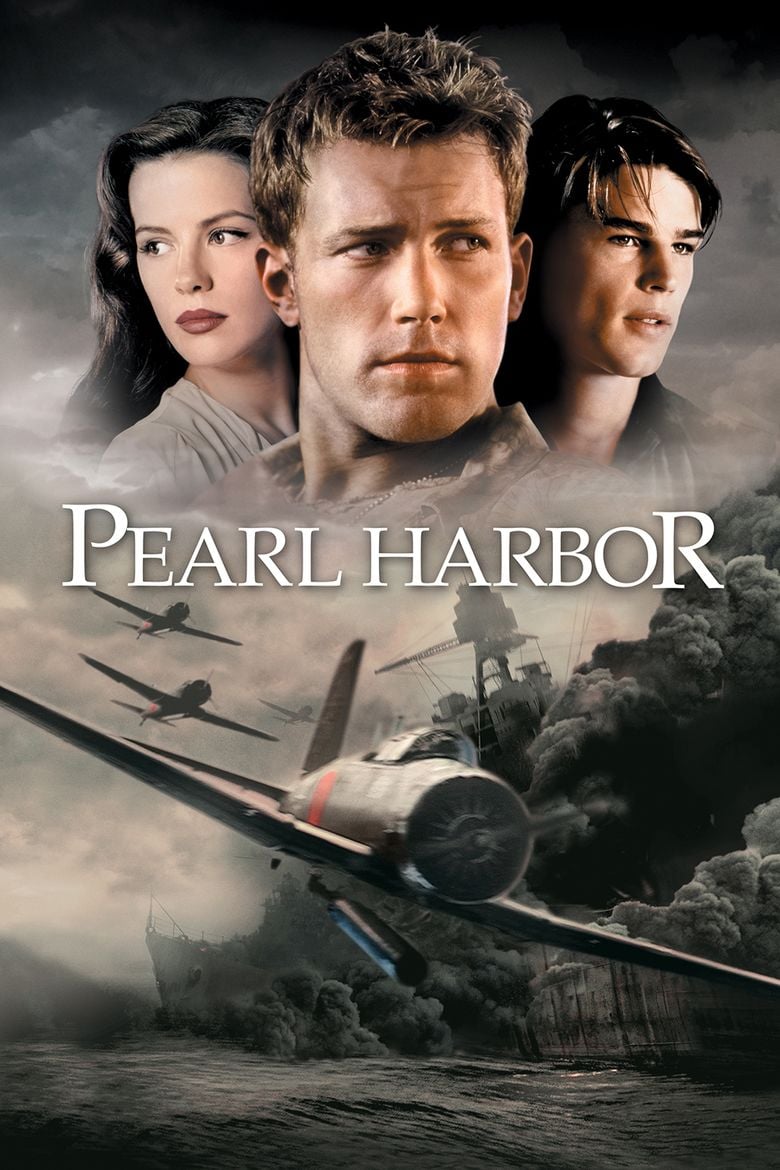 | ||||||||||||||||||||||||||||||||||
Release date May 21, 2001 (2001-05-21) (Pearl Harbor, Hawaii)May 25, 2001 (2001-05-25) (United States) Initial release May 21, 2001 (Pearl Harbor) Cast (Capt. Rafe McCawley), (Capt. Danny Walker), (Nurse Lt. Evelyn Johnson), Cuba Gooding Jr. (Petty Officer Doris Miller), (President Franklin Delano Roosevelt), (Lt. Col. James Doolittle)Similar movies Captain America: The First Avenger , , The Story of G.I. Joe , When Trumpets Fade , Max Manus: Man of War , Hell Is for Heroes Tagline December 7, 1941 - A day that shall live in infamy. | ||||||||||||||||||||||||||||||||||
Pearl Harbor is a 2001 American biographical romantic period war drama film directed by Michael Bay, produced by Bay and Jerry Bruckheimer and written by Randall Wallace. It stars Ben Affleck, Kate Beckinsale, Josh Hartnett, Cuba Gooding Jr., Tom Sizemore, Jon Voight, Colm Feore and Alec Baldwin. The film is loosely based on the Japanese attack on Pearl Harbor in December 1941, and the Doolittle Raid.
Contents
- Pearl harbor the battle
- Plot
- Production
- Marketing
- Box office
- Critical response
- Historical accuracy
- Anachronisms
- In popular culture
- Home media
- Soundtrack
- References
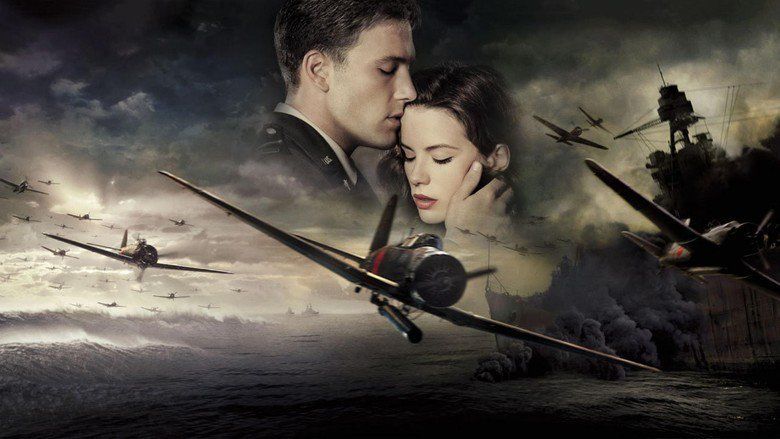
Despite receiving generally negative reviews from critics, the film was a major box office success, earning $59 million in its opening weekend and, in the end, nearly $450 million worldwide. It was nominated for four Academy Awards, winning in the category of Best Sound Editing. However, it was also nominated for six Golden Raspberry Awards, including Worst Picture. This marked the first occurrence of a Worst-Picture-nominated film winning an Academy Award.
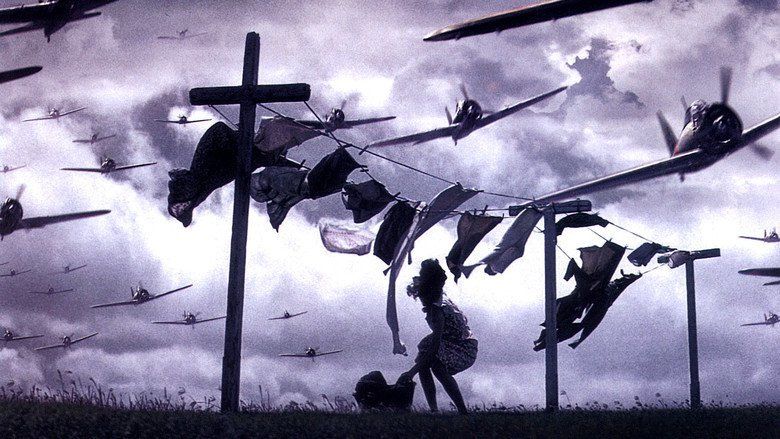
Pearl harbor the battle
Plot
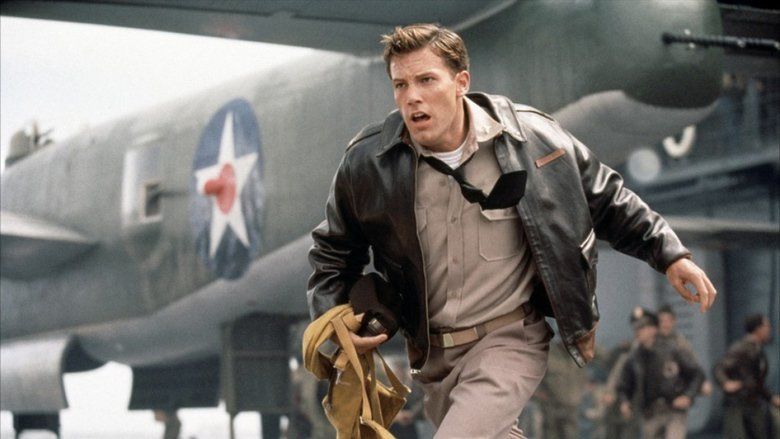
In 1923 Tennessee, two headstrong young boys, Rafe McCawley and Danny Walker, play together in the back of an old biplane, pretending to be soldiers fighting the Germans in World War I. After Rafe's father lands his biplane and leaves, Rafe and Danny climb into the plane. Rafe accidentally starts it, but manages to stop the plane at the end of the runway. Enraged, Danny's father beats his son. Rafe stands up to him, calling him a "dirty German". However, Danny's father reveals that he fought the Germans in World War I.

Eighteen years later, in January 1941, Danny and Rafe are both first lieutenants under the command of Major Jimmy Doolittle. Doolittle informs Rafe that he has been accepted into the Eagle Squadron (a RAF outfit for American pilots during the Battle of Britain). A nurse named Evelyn meets Rafe, who passes his medical exam despite his dyslexia. That night, Rafe and Evelyn enjoy an evening of dancing at a nightclub and later a jaunt in New York harbor in a borrowed police boat. Rafe shocks Evelyn by saying that he has joined the Eagle Squadron and is leaving the next day.
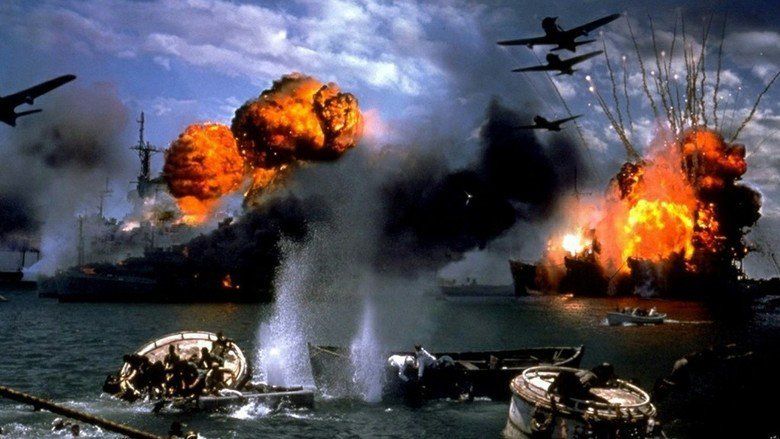
Danny, Evelyn and their fellow pilots and nurses are transferred to Pearl Harbor. Meanwhile, Rafe becomes a flying ace, but is shot down over the English Channel and presumed to be killed in action. Danny gives Evelyn the news and she is devastated. Three months later, Evelyn and Danny begin a relationship.
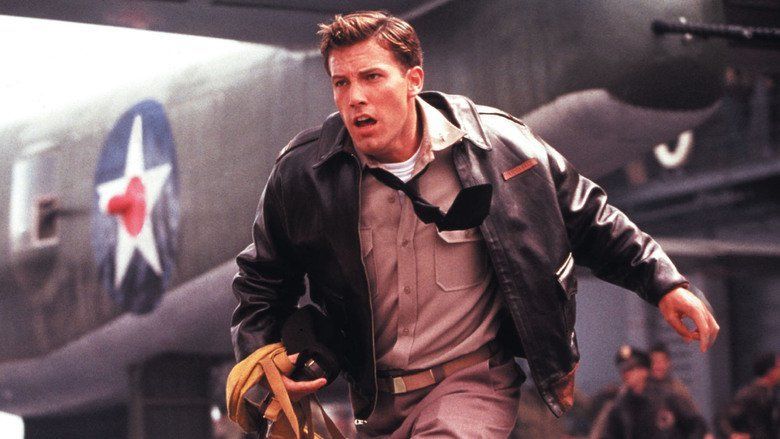
On the night of December 6, Evelyn is shocked to discover Rafe standing outside her door, having survived his downing. He goes to the Hula bar where he is welcomed back by his overjoyed fellow pilots. Danny finds Rafe in the bar with the intention of making things right, but the two get into a fight. They drive away, avoiding being put in the brig when the authorities arrive at the bar. The two later fall asleep in Danny's car.

Next morning, on December 7, 1941, the Japanese navy begins its attack on Pearl Harbor. The USS Arizona is obliterated when an armor-piercing bomb detonates the ship's forward ammunition magazine, literally lifting the bow out of the water. The USS Oklahoma capsizes after several torpedoes strike her, trapping hundreds of men inside. On the USS West Virginia suffers severe damage. One bomb mortally wounds Captain Mervyn S. Bennion. Cook Dorie Miller, mans a .50 caliber machine gun and shoots down a Japanese plane. The USS Nevada makes a run for the sea, becoming a primary target during the second wave. Danny and Rafe drive away in search of a still standing airfield, while Evelyn and the other nurses struggle to assist hundreds of wounded. Rafe and Danny manage to get in the air in P-40s, managing to down several Zeroes. Landing, they assist in the rescue of the capsized USS Oklahoma, but are too late to save the crew of the USS Arizona
The next day, President Franklin Delano Roosevelt delivers his Day of Infamy Speech to the nation and requests the US Congress declare a state of war with the Empire of Japan. The survivors attend a memorial service to honor the numerous dead. Later, Danny and Rafe are both assigned to travel stateside under newly promoted Lt. Colonel Doolittle for a secret mission. Before they leave, Evelyn reveals to Rafe that she is pregnant with Danny's child, and intends to stay with Danny.
Upon their arrival in California, Danny and Rafe are both promoted to Captain and awarded the Silver Star, and volunteer for a secret mission under Doolittle. During the next three months, Rafe, Danny and other pilots train with specially modified B-25 Mitchell bombers. In April, the raiders are sent towards Japan on board the USS Hornet. Their mission: bombing Tokyo, landing in China. However, the Japanese discover them early, forcing the raiders to launch from a longer distance than planned. After a successful bombing run, the raiders crash-land in a rice paddy in Japanese-controlled China. The Japanese Army pin down Rafe's plane, but Danny's crew manages to destroy a patrol before crashing. Danny is shot during the attack by Japanese patrols while the other pilots, Red and Gooz, kill the remaining Japanese patrolmen. Rafe tells Danny that Evelyn is pregnant and he must live to be his father. Danny then tells Rafe that he will have to be the father and dies. Back in California, a pregnant Evelyn sees Rafe getting off the aircraft, carrying Danny's coffin. Afterward, Evelyn and Miller are awarded medals and Rafe is awarded his medal by President Roosevelt. After the war, Rafe and Evelyn, now married, visit Danny's grave with Danny and Evelyn's son, also named Danny. Rafe then asks his stepson if he would like to go flying, and they fly off into the sunset in the old biplane that his father once had.
Production
The proposed budget of $208 million that Bay and Bruckheimer wanted was an area of contention with Disney executives, since a great deal of the budget was to be expended on production aspects. Also controversial was the effort to change the film's rating from R to PG-13. Bay wanted to graphically portray the horrors of war and was not interested in primarily marketing the final product to a teen and young adult audience. Budget fights continued throughout the planning of the film, with Bay "walking" on several occasions.
In order to recreate the atmosphere of pre-war Pearl Harbor, the producers staged the film in Hawaii and used current naval facilities. Many active duty military members stationed in Hawaii and members of the local population served as extras during the filming. The set at Rosarito Beach in the Mexican state of Baja California was used for scale model work as required. Formerly the set of Titanic (1997), Rosarito was the ideal location to recreate the death throes of the battleships in the Pearl Harbor attack. A large-scale model of the bow section of USS Oklahoma mounted on a gimbal produced an authentic rolling and submerging of the doomed battleship. Production Engineer Nigel Phelps stated that the sequence of the ship rolling out of the water and slapping down would involve one of the "biggest set elements" to be staged. Matched with computer generated imagery, the action had to reflect precision and accuracy throughout. In addition, to simulate the ocean, the film crew used a massive stadium-like "bowl" filled with water. The bowl was built in Honolulu, Hawaii and cost nearly $8 million. Today the bowl is used for scuba training and deep water fishing tournaments.
The vessel most seen in the movie was USS Lexington, representing both USS Hornet and a Japanese carrier. All aircraft take-offs during the movie were filmed on board the Lexington, a museum ship in Corpus Christi, Texas. The aircraft on display were removed for filming and were replaced with film aircraft as well as World War II anti-aircraft turrets. Other ships used in filler scenes included USS Hornet, and USS Constellation during filming for the carrier sequences. Filming was also done on board the museum battleship USS Texas located near Houston, Texas.
Marketing
The first trailer was released in 2000 and was shown alongside screenings of Cast Away, with another trailer released in Spring 2001, shown before Pokémon 3: The Movie.
Box office
Pearl Harbor grossed $198,542,554 at the domestic box office and $250,678,391 overseas for a worldwide total of $449,220,945, ahead of Shrek. The film was ranked the sixth highest-earning picture of 2001. It is also the third highest-grossing romantic drama film of all time, as of January 2013, behind Titanic and Ghost.
Critical response
The film received generally negative reviews from critics. It has a 25% approval rating according to review aggregator website Rotten Tomatoes (based on 190 reviews with an average rating of 4.5/10), making it Bay's fifth worst reviewed movie on the site to date, next to Transformers: The Last Knight, Transformers: Age of Extinction, Transformers: Revenge of the Fallen, and Bad Boys II. On Metacritic, the film has a score of 44 out of 100 based on 35 reviews, indicating "mixed or average reviews". While it earned praise for its technical achievements and the performances of Josh Hartnett, Mako, and Dan Aykroyd, the screenplay,its three hour run time and acting were popular targets for criticism.
Roger Ebert of the Chicago Sun-Times gave the film one and a half stars, writing: "Pearl Harbor is a two-hour movie squeezed into three hours, about how on Dec. 7, 1941, the Japanese staged a surprise attack on an American love triangle. Its centerpiece is 40 minutes of redundant special effects, surrounded by a love story of stunning banality. The film has been directed without grace, vision, or originality, and although you may walk out quoting lines of dialogue, it will not be because you admire them", and criticized its liberties with historical facts: "There is no sense of history, strategy or context; according to this movie, Japan attacked Pearl Harbor because America cut off its oil supply, and they were down to an 18-month reserve. Would going to war restore the fuel sources? Did they perhaps also have imperialist designs? Movie doesn't say".
A. O. Scott of the New York Times wrote, "Nearly every line of the script drops from the actors' mouths with the leaden clank of exposition, timed with bad sitcom beats". USA Today gave the film two out of four stars and wrote, "Ships, planes and water combust and collide in Pearl Harbor, but nothing else does in one of the wimpiest wartime romances ever filmed."
In his review for The Washington Post, Desson Howe wrote, "although this Walt Disney movie is based, inspired and even partially informed by a real event referred to as Pearl Harbor, the movie is actually based on the movies Top Gun, Titanic and Saving Private Ryan. Don't get confused." Peter Travers of Rolling Stone magazine wrote, "Affleck, Hartnett and Beckinsale – a British actress without a single worthy line to wrap her credible American accent around – are attractive actors, but they can't animate this moldy romantic triangle". Time magazine's Richard Schickel criticized the love triangle: "It requires a lot of patience for an audience to sit through the dithering. They're nice kids and all that, but they don't exactly claw madly at one another. It's as if they know that someday they're going to be part of "the Greatest Generation" and don't want to offend Tom Brokaw. Besides, megahistory and personal history never integrate here".
Entertainment Weekly was more positive, giving the film a "B−" rating, and Owen Gleiberman praised the Pearl Harbor attack sequence: "Bay's staging is spectacular but also honorable in its scary, hurtling exactitude. ... There are startling point-of-view shots of torpedoes dropping into the water and speeding toward their targets, and though Bay visualizes it all with a minimum of graphic carnage, he invites us to register the terror of the men standing helplessly on deck, the horrifying split-second deliverance as bodies go flying and explosions reduce entire battleships to liquid walls of collapsing metal".
In his review for The New York Observer, Andrew Sarris wrote, "here is the ironic twist in my acceptance of Pearl Harbor – the parts I liked most are the parts before and after the digital destruction of Pearl Harbor by the Japanese carrier planes" and felt that "Pearl Harbor is not so much about World War II as it is about movies about World War II. And what's wrong with that?"
Historical accuracy
Like many historical dramas, Pearl Harbor provoked debate about the artistic license taken by its producers and director. National Geographic Channel produced a documentary called Beyond the Movie: Pearl Harbor detailing some of the ways that "the film's final cut didn't reflect all the attacks' facts, or represent them all accurately".
Many Pearl Harbor survivors dismissed the film as grossly inaccurate and pure Hollywood. In an interview done by Frank Wetta, producer Jerry Bruckheimer was quoted saying: "We tried to be accurate, but it's certainly not meant to be a history lesson". Historian Lawrence Suid's review is particularly detailed as to the major factual misrepresentations of the film and the negative impact they have even on an entertainment film. Some other historical inaccuracies found in the film include the early childhood scenes depicting a Stearman biplane crop duster in 1923; the aircraft was not accurate for the period, as the first commercial crop-dusting company did not begin operation until 1924, and the U.S. Department of Agriculture did not purchase its first cotton-dusting aircraft until April 16, 1926.
The inclusion of Affleck's character in the Eagle Squadron is another jarring aspect of the film, since active-duty U.S. airmen were prohibited from joining the squadron, though some American civilians did join the RAF. Yet another flaw: Ben Affleck's Spitfire has insignia "RF" – this is an insignia of No. 303 Polish Fighter Squadron. Countless other technical lapses rankled film critics, such as Bay's decision to paint the Japanese Zero fighters green (most of the aircraft in the attack being painted light gray/white), even though he knew that was historically inaccurate, because he liked the way the aircraft looked and because it would help audiences differentiate the "good guys from the bad guys".
One of the film's scenes show Japanese aircraft targeting medical staff and the base's hospital. Although it was damaged in the attack, the Japanese did not deliberately target the U.S. naval hospital and only a single member of its medical staff was killed as he crossed the navy yard to report for duty.
Critics decried the use of fictional replacements for real people, declaring that Pearl Harbor was an "abuse of artistic license". The roles the two male leads have in the attack sequence are analogous to the real historical deeds of U.S. Army Air Forces Second Lieutenants George Welch and Kenneth M. Taylor, who took to the skies in P-40 Warhawk aircraft during the Japanese attack and, together, claimed six Japanese aircraft and a few probables. Taylor, who died in November 2006, called the film adaptation "a piece of trash... over-sensationalized and distorted".
The harshest criticism was aimed at instances in the film where actual historical events were altered for dramatic purposes. For example, Admiral Kimmel did not receive the report that an enemy midget submarine was being attacked until after the bombs began falling, and did not receive the first official notification of the attack until several hours after the attack ended.
The scene following the attack on Pearl Harbor, where President Roosevelt demands an immediate retaliatory strike on the soil of Japan, did not happen as portrayed in the film. Admiral Chester Nimitz and General George Marshall are seen denying the possibility of an aerial attack on Japan, but in real life they actually advocated such a strike. Another inconsistency in this scene is when President Roosevelt (who was at this time in his life, stricken and bound to a wheelchair due to Polio) is able to stand up to challenge his staff's distrust in a strike on Japan. This too, never happened in real life. In the film Admiral Isoroku Yamamoto says “I fear all we have done is to awaken a sleeping giant”, a quote which was copied from the 1970 film Tora! Tora! Tora!.
The portrayal of the planning of the Doolittle Raid, the air raid itself, and the raid's aftermath, is considered one of the most historically inaccurate portions of the film. In the film, Jimmy Doolittle and the rest of the Doolittle raiders had to launch from USS Hornet 624 miles off the Japanese coast and after being spotted by a few Japanese patrol boats. In actuality, the Doolittle raiders had to launch 650 miles off the Japanese coast and after being spotted by only one Japanese patrol boat. The aircraft were launched from USS Constellation, standing in for USS Hornet from which the Doolittle Raid was launched. In the film, all of the raiders are depicted as dropping their bombs on Tokyo, with some of the bomb blasts obliterating entire buildings. In actuality, the Doolittle raiders did bomb Tokyo but also targeted three other industrial cities, and the damage inflicted was minimal. The film shows the Doolittle raider personnel in China overcoming the Japanese soldiers in a short gun battle with help from a strafing B-25, which never happened in real life. Yet there was no acknowledgement was given in the film to the fact that approximately 250,000 Chinese civilians were massacred by the Japanese Army in eastern China in retaliation for Chinese assistance of the attacking American aviators in participation of the Doolittle Raid.
Actor Kim Coates criticized the film for choosing not to portray historically accurate smoking habits and men's hairstyles.
An establishing shot of the United States Department of War building is clearly a shot of the exterior of the U.S. Capitol Building. In 1941, the War Department was housed in the War Department Building in Washington's Foggy Bottom neighborhood (renamed the Harry S Truman Building in 2000) and in the Munitions Building on the National Mall. Neither structure bears any architectural resemblance to the edifice shown in the film.
Anachronisms
Numerous other inconsistencies and anachronisms are present in the film. A sailor has a pack of Marlboro Light cigarettes in his pocket, not introduced until 1972. In the beginning of the movie, a newsreel of 1940 is presented with combat footage in Europe, showing a M-26 Pershing tank fighting in the city of Cologne, which did not happen until March 1945.
The crop duster in the first scene set in 1923 was not commercially available until the late 1930s.
Three Spruance destroyers tied abreast of each other at their pier are seen being bombed by the Japanese planes, although this class of ship only entered service with the US Navy in the 1970s. The retired Iowa-class battleship USS Missouri was used to represent USS West Virginia for Dorie Miller's boxing match. The West Virginia did not have the modernized World War II-era bridge and masts found on newer U.S. battleships until her reconstruction was finished in 1943, while the Iowa-class did not enter service until 1943 onwards. In one shot, the USS Arizona memorial is briefly visible in the background during a scene taking place several months before the attack.
One of Doolittle's trophies in a display case depicts a model of an F-86 Sabre, which was not even on the drawing board in the 1940s. Late production models of the B-25J were used instead of the early B-25B. Several shots of the USS Hornet aircraft carrier depicted it as having an angled flight deck, a technology that was not implemented until after the war. While Hornet was portrayed by a World War II era vessel (USS Lexington), Hornet was a Yorktown-class carrier, whereas Lexington was a modernized Essex-class carrier. The takeoff sequences for the Doolittle Raid were filmed on USS Constellation, a Kitty Hawk-class aircraft carrier which did not enter service until 1961. As a supercarrier, the Constellation has a much longer flight deck than the Yorktown or Essex class carriers, giving the B-25s a substantially longer (and safer) takeoff run. The Japanese carriers are portrayed more correctly by comparison—, the Akagi and Hiryu did have their bridge/conning tower superstructure on the port side rather than the more common starboard configuration. In the movie it was done by manuvering an Essex class aircraft carrier backwards to act as the Akagi.
In popular culture
The soundtrack for the 2004 film Team America: World Police contains a song entitled "End of an Act". The song's chorus recounts, "Pearl Harbor sucked, and I miss you" equating the singer's longing to how much "Michael Bay missed the mark when he made Pearl Harbor" which is "an awful lot, girl". The ballad contains other common criticisms of the film, concluding with the rhetorical question "Why does Michael Bay get to keep on making movies?"
Home media
A Commemorative 60th Anniversary Edition was released on December 4, 2001. The feature was spread across two videotapes in letterbox format, and tape two also included Unsung Heroes of Pearl Harbor, a 50-minute documentary on little-known heroes of the attack, and a Faith Hill music video.
Around the same time, a two-disc DVD of the Commemorative 60th Anniversary Edition was released. This release included the first two hours of the feature on disc one, and on disc two, the last hour of the feature, Journey to the Screen, a 47-minute documentary on the monumental production of the film, Unsung Heroes of Pearl Harbor, the Faith Hill music video and theatrical trailers.
A Pearl Harbor DVD gift set that includes the Commemorative Edition two-disc set, National Geographic′s "Beyond the Movie" feature and a dual-sided map was released concurrently on December 4, 2001.
A deluxe Vista Series edition of the film was released on July 2, 2002. It contained an R-rated director's cut of the film, with numerous commentaries from the cast and crew alongside a few "easter eggs". The director's cut included the reinsertion of graphic carnage during the central attack; small alterations and additions to existing scenes; Doolittle addressing the pilots before the raid; and the replacement of the campfire scene with a scene of Doolittle speaking personally to Rafe and Danny about the value of friendship. It runs at 184 minutes compared to the 183 minutes of the theatrical cut.
This elaborate package, which DVDtalk.com called "the most extensive set released comprising of [sic] only one film", includes four discs of film and bonus features, a replication of Roosevelt's speech, collectible promotional postcards and a carrying case that resembles a historic photo album. The bonus features include all the features included in the commemorative edition, plus additional footage. There are three audio commentaries: 1) Director and film historian, 2) Cast and 3) Crew. Other features include: "The Surprise Attack", a multi-angle breakdown of the film's most exciting sequence (30 minutes), which includes multiple video tracks (such as previsualization and final edit) and commentaries from veterans. Also included is the "Pearl Harbor Historic Timeline", a set-top interactive feature produced by documentarian Charles Kiselyak (68 minutes). The "Soldier's Boot Camp" follows the actors as they take preparation for their roles to an extreme (30 minutes)), "One Hour Over Tokyo" and "The Unsung Heroes of Pearl Harbor", two History Channel documentaries along with "Super-8 Montage", a collection of unseen Super-8 footage shot for potential use in the movie by Michael Bay's assistant, Mark Palansky; "Deconstructing Destruction", an in-depth conversation with Michael Bay and Eric Brevig (of Industrial Light and Magic) about the special effects in the movie and "Nurse Ruth Erickson interview" complete the extra features component.
On December 19, 2006, a 65th Anniversary Commemorative Edition high-definition Blu-ray Disc was released of the Theatrical Cut.
Soundtrack
The soundtrack to Pearl Harbor on Hollywood Records was nominated for the Golden Globe Award for Best Original Score (lost to the score of Moulin Rouge!). The original score was composed by Hans Zimmer. The song "There You'll Be" was nominated for the Academy Award and Golden Globe Award for Best Original Song.
- "There You'll Be" – song performed by Faith Hill
- Tennessee – 3:40
- Brothers – 4:04
- ...And Then I Kissed Him – 5:37
- I Will Come Back – 2:54
- Attack – 8:56
- December 7 – 5:08
- War – 5:15
- Heart of a Volunteer – 7:05
References
Pearl Harbor (film) WikipediaPearl Harbor (film) IMDbPearl Harbor (film) Rotten TomatoesPearl Harbor (film) Roger EbertPearl Harbor (film) MetacriticPearl Harbor (film) themoviedb.org
